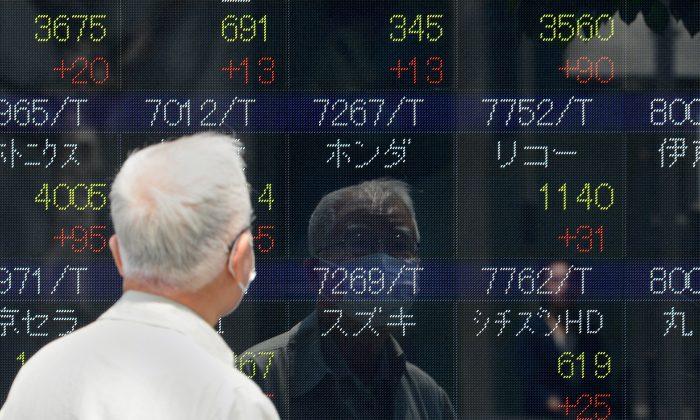It looks like Japan is in fantastic shape, at least when one only looks at the Japanese stock market, which is up 45 percent in 2013. Japanese policymakers are celebrating, but the strategy of currency devaluation has massive risks.
For the first time since April 2010, the Nikkei 225 has a good chance of surpassing the Dow Jones Industrial Average in nominal terms. The Nikkei closed at 15,096 points May 15 while the Dow closed at 15,275. Despite the Dow’s impressive rise of over 16 percent in 2013, the Nikkei is up more than 45 percent this year or 78 percent since the bottom in November 2012.
Conventional wisdom would indicate that Japan is growing by leaps and bounds, doing much better than the United States. And yet, the opposite is true. Experts like Richard Howard of Hayman Capital say that the country is playing a dangerous game using currency devaluation to kick-start growth. His firm, headed by famous investor Kyle Bass, has predicted Japan’s strategy and the consequences for a long time now.
“There is a belief and expectation if you can weaken the yen sufficiently you can re-establish Japanese nominal growth by increasing export competitiveness,” he told the Epoch Times.
Even before the new government around Prime Minister Shinzo Abe assumed office on Dec. 26, 2012, the yen had been gradually weakening. Since the low in September, the yen weakened from 77.45 to 102.43 per dollar, or 32 percent.
The Abe government has promised inflationary monetary policy and it has delivered. In January, the theoretically independent Bank of Japan (BoJ) announced an aggressive $145 billion quantitative easing (QE) starting in January 2014. In March, moderate BoJ Gov. Masaaki Shirakawa was replaced by the dovish Haruhiko Kuroda.
“The Bank of Japan has effectively surrendered its independence to the government of Japan. ... The announcement of [a] 2 percent inflation target is an enormous step forward. The next step is to have a governor … who is committed to the execution of that task,” says Howard.
Kuroda proved that he was up to the task, starting an unlimited and completely unexpected QE program in April. The bank announced it would buy up $68 billion worth of Japanese government bonds (JGBs) per month until a 2 percent inflation target was reached. As a reference, the Federal Reserve is buying up $85 billion of mortgage-backed securities and Treasurys for an economy roughly three times the size of Japan’s.
Given the yen’s devaluation and the Nikkei’s rise, the policymakers can claim partial victory. According to Howard, however, the plan is flawed and will ultimately backfire.
“It happened to the U.K … to the U.S. in the 70s and 80s. What you see is you have this hollowing out of the industrial base and then a currency response, but the currency response doesn’t succeed in bringing back the industrial capacity. We think that it is unlikely that you’ll see an enormous amount of the Japanese industry return. What has been offshored and exported is unlikely to return to Japan immediately just because you have seen a devaluation of the currency.”
Anecdotal evidence suggests that Howard is right. Despite the yen’s weakness, Sharp just reported the biggest loss in the company’s 100-year history May 14. The company lost $5.36 billion in 2012 because its competitors have surpassed it in innovation and cost management.
If Japan continues down this dangerous path, however, greater dangers lurk in the government bond market.
“You could see a big sell-off there as people migrate out of those assets because we don’t believe that there is a natural buyer out there in this new inflationary environment … with bonds at current yields where they are,” says Howard.
He maintains that investors will demand compensation for holding JGBs at very low yields, because future inflation will eat away the gain in interest. If interest rates rise, bond prices will fall.
In fact, this move has already started to happen. After a climatic bottom in March, yields of the five-year JGB have risen fourfold from 0.10 percent to 0.45 percent. Although they are still at very low levels, the size of the move and Japan’s precarious debt situation makes it very dangerous.
“The problem with trying to create inflation is that debt is going to be harder to service. The hope is that the inflation creates enough nominal growth to enable the higher debt service costs,” says Howard.
Japan has a mind-boggling debt-load of 240 percent of GDP, the worst of any developed country, and Hayman has calculated that every 1 percent rise in borrowing costs will result in extra debt service costs equivalent to 25 percent of government revenue. Japan is not there yet, but time is ticking.






Friends Read Free